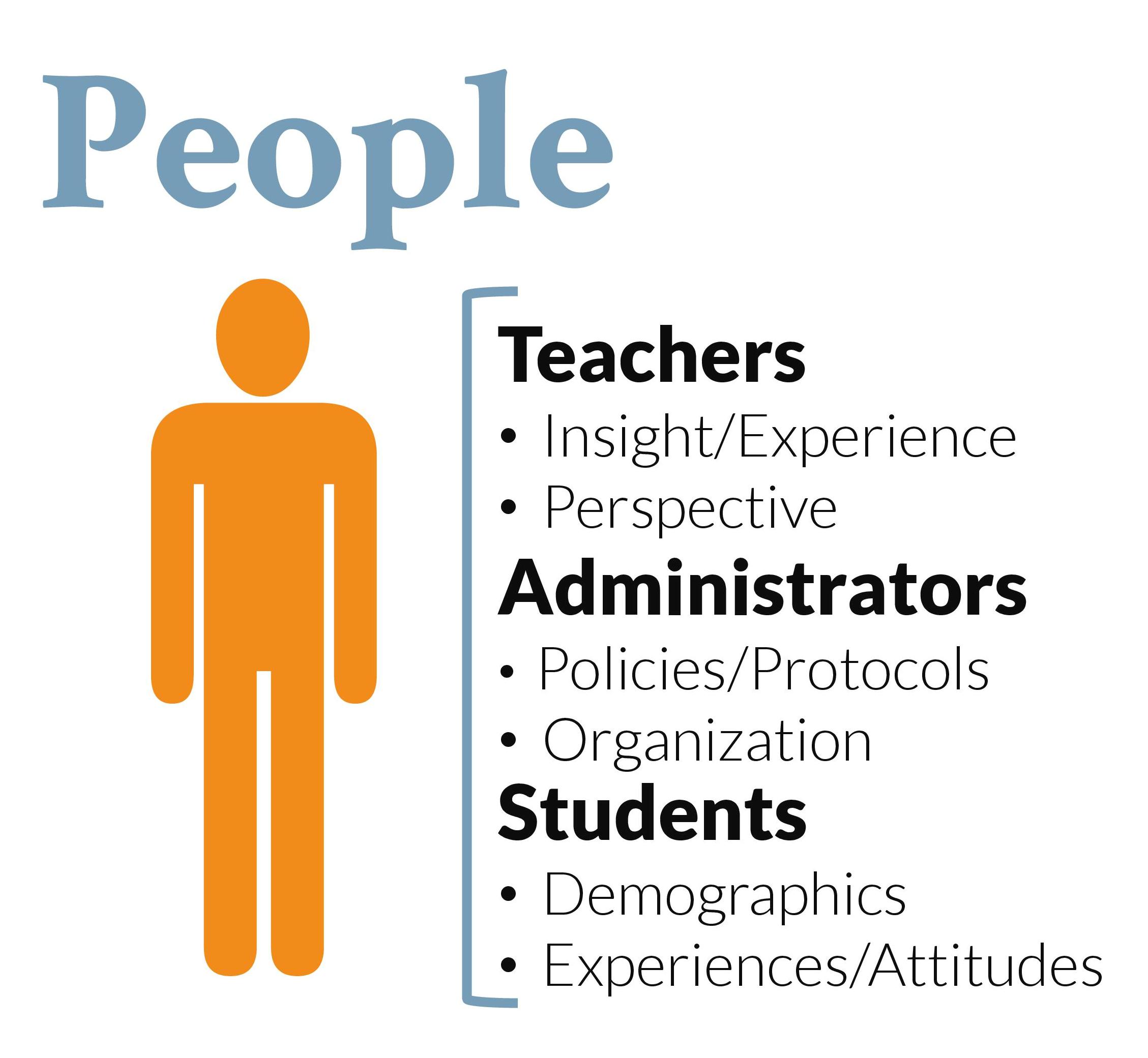Developing a cohesive curriculum involves many moving parts and experts in teaching, target languages, and document design. Because of this sprawl of talents, the process should have clear, specific expectations in the pre-development stage. That way, everyone is working toward the same goals on the same timelines. Changing activities, document design, or pacing once the project has started, for example, creates a ripple effect that halts the work while the moving parts—wherever they may be in the process—are changed and reviewed. Consequently, you should take time to define your curriculum into what we call the Four P’s: People, Purpose, Program, and Product. During this blog post, we’ll talk about People.

People
Many people will have a hand in development, so ask this: Who are your primary stakeholders? Administrators, teachers, and students will affect and will be affected by the curriculum in different ways, so you’ll want to involve them early on.
Involving the teachers allows you to get their perspective and give them a sense of ownership. Your teachers will have valuable insight into what works and what doesn’t. What materials do they like to use? How much flexibility do they like to have? How much time do they take to review homework? Asking the instructors for their input not only helps shape the new curriculum but also prepares them to expect change and to be a part of it.
Administrators in your organization will also have a hand in the development process, so they need to be involved in some decisions: policies, protocols, teacher response, meeting program objectives, and so on. Plan out who would review and handle revisions, who would keep things organized and on schedule, and who would guide everyone’s efforts with a big-picture understanding of the curriculum.
Students are another important component, and the pre-development conversation should factor in key demographic aspects: age, education level, and occupation. For instance, younger students might thrive in classes where activities are shorter and varied. On the other hand, adult students will respond to independent learning and a connection to their real-world jobs. Consider your students’ goals, their attitudes toward language learning, and their prior language experience (e.g., DLAB scores, other languages learned).
Investing in human capital is essential for developing a language curriculum. So, take the time to understand those involved during the pre-development stage.




